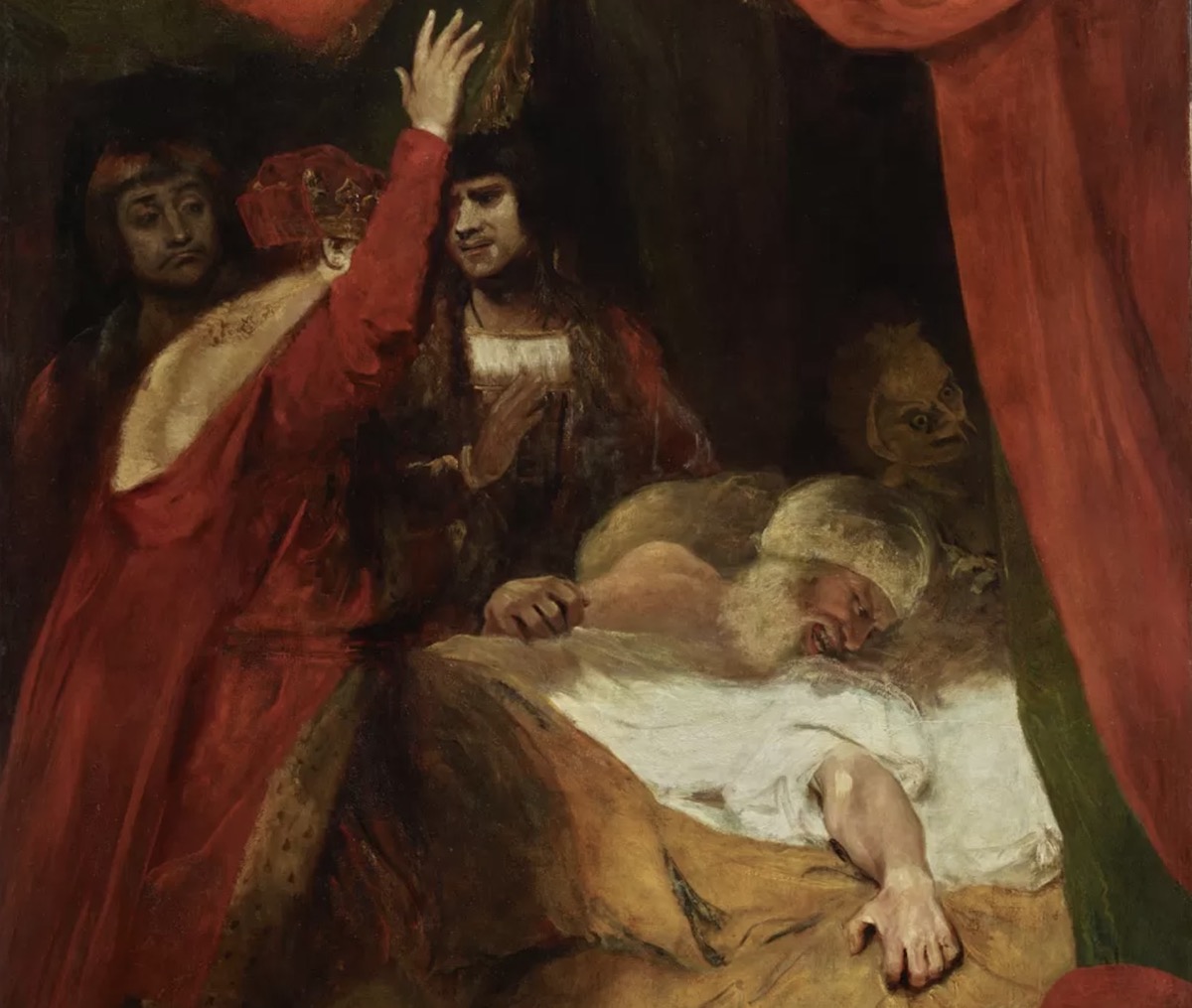In a dramatic turn of events, a devil-like figure, once considered too controversial for the audience of its time, has resurfaced from the depths of a painting by Sir Joshua Reynolds. After meticulous conservation efforts by the National Trust, the hidden fiend has been unveiled, shedding light on a long-standing debate about artistic interpretation and creative freedom.
The painting, measuring 2.185m x 1.575m, has returned to Petworth House in West Sussex for public display, marking one of four works by Reynolds that the National Trust has conserved to commemorate the artist’s 300th birthday. The painting depicts a scene from Shakespeare’s Henry VI Part 2, where the King, witnessing the death of Cardinal Beaufort, implores God for a peaceful end while declaring, “O! beat away the busy meddling fiend.”
Reynolds, renowned for his aristocratic portraits, delved into historical themes, including gothic elements as depicted in this controversial piece. Including the fiend behind the dying Cardinal’s pillow stirred significant debate in artistic circles. The literal representation of a poetic figure of speech was met with resistance during its initial exhibition at the Shakespeare Gallery in 1789.

John Chu, the Trust’s Senior National Curator for Pictures and Sculpture, elaborated on the controversy, stating, “It didn’t fit in with some of the artistic rules of the times to have a poetic figure of speech represented so literally in this monstrous figure. When it was first shown at the Shakespeare Gallery in 1789, it generated more controversy than any other work.”
Reynolds, however, staunchly defended his creative choice, resisting attempts to alter the painting. Humphry Repton, a notable art critic of the time, argued that the evil spirit could only be included if listed as a character in Shakespeare’s play. Despite critiques, Reynolds’ decision to retain the fiend persisted.
The painting, originally created as a commercial commission for the Shakespeare Gallery in London’s Pall Mall in 1789, was paid 500 Guineas. Engraver Caroline Watson produced the plates for prints, the first of which depicted the fiend. Subsequent printings attempted to erase the controversial figure, mirroring the debate surrounding its existence.
Upon close examination, conservators discovered layers of overpainting and six layers of varnish, obscuring the fiend. Becca Hellen, the Trust’s Senior National Conservator for paintings, revealed the extent of the challenge, stating, “Reynolds is always difficult for conservators because of the experimental way he worked, often introducing unusual materials in his paint medium, striving for the effects he wanted to achieve.”
Despite the challenges, the restoration team diligently removed non-original varnishes, allowing the fiend to re-emerge and restoring the painting’s intended form and perspective. This unexpected revelation sheds light on the complexities of artistic expression, leaving art enthusiasts and historians alike captivated by the devil’s emergence from the shadows of history.
Sir Joshua Reynolds, one of the most celebrated painters of the 18th century, was born on July 16, 1723, in Plympton, Devon, England. His exceptional talent and innovative approach to portrait painting earned him a prominent place in the annals of art history.
Reynolds displayed an early aptitude for art, and his passion led him to London, where he studied under the guidance of influential artist Thomas Hudson. In 1743, he embarked on a journey to Italy, immersing himself in the works of Renaissance masters. This experience profoundly influenced his style, inspiring him to blend classical elements with contemporary portraiture.
Upon his return to England, Reynolds quickly gained recognition for his portraits, characterized by their graceful compositions and exquisite use of color and light. His ability to capture the essence of his subjects, depicting their personalities and emotions, set him apart as a masterful portraitist. His clientele included aristocrats, statesmen, and intellectuals, cementing his reputation as a sought-after artist.
In 1768, Reynolds became the first President of the Royal Academy of Arts, a position he held with distinction for over two decades. He played a pivotal role in shaping the artistic landscape of his time, promoting academic excellence and encouraging young artists to pursue their creative visions.
Reynolds’ influence extended beyond his paintings; he authored insightful discourses on art theory, offering valuable insights into the principles of composition and aesthetics. His writings, collected in “Discourses on Art,” remain significant texts in art education.
The painter’s legacy endures through his timeless portraits, which continue to captivate viewers with their elegance and depth. Reynolds’ ability to blend classical ideals with contemporary sensibilities left an indelible mark on the art world, inspiring generations of artists to come.
Sir Joshua Reynolds passed away on February 23, 1792, leaving behind a legacy of artistic brilliance that continues to be celebrated and admired by art enthusiasts worldwide. His contributions to the realm of portraiture and his role in shaping the Royal Academy solidify his place as a revered figure in the history of art.
The painting will be on public display from today at Petworth House in West Sussex, offering visitors a chance to witness this intriguing art history.

